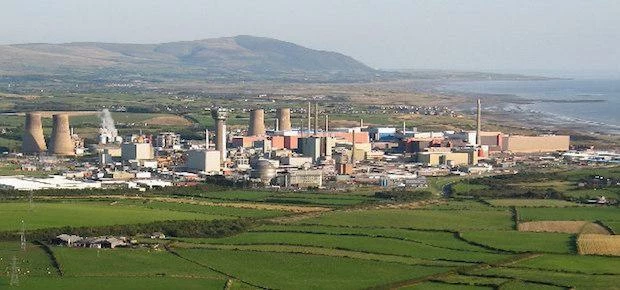
Partner Article
Sellafield remove radioactive sludge in clean up process
Sellafield Ltd announced the first batch of radioactive sludge has been removed from what has been called the most hazardous nuclear plants in Europe.
Sellafield have said this is a ‘huge step forward“ in the UK’s nuclear decommissioning programme.
1500 cubic metres of radioactive sludge is lying at the bottom of a pond, which is equivalent to more than half an Olympic sized swimming pool.
Head of the The First Generation Magnox Storage Pond (FGMSP) Martin Leafe said.
“We’re making history at Sellafield by transferring the first sludge using a tried and tested pump to a new £240 million state-of-the-art sludge storage plant containing three enormous stainless steel buffer storage vessels, each of which is the same volume as seven double decker buses.
“Working with both Westinghouse and Energy Solutions, the technology already in use at European reactor stations has been adapted for our needs at Sellafield and rigorously tested in a full scale test facility at Forth Engineering here in West Cumbria.”
The sludge is a similar consistency to sand and has to be carefully removed while leaving water in place to provide a radioactive shield.
The removal of the sludge from the pond, which holds 14,000 cubic metres of contaminated water, will reduce the hazard posed by the facility.
While the pond has thick reinforced concrete walls, it has no roof and is therefore open to the elements, causing sludge to accumulate at the bottom.
Martin Leafe added: “The pond is six metres deep and we’ve spent years devising an engineering solution to literally suck up the radioactive sludge from the bottom of the pond, which in places is over one metre deep.
“What makes the job more difficult is that the pond is very congested and full of large metal boxes containing nuclear fuel, so we need to work around these and ensure these remain fully submerged at all times.
“Just to make matters more difficult we have to drive the platform remotely from a control cabin to minimize the radiation dose to the workforce.
“We transfer the sludge in batches to the new plant where it settles in one of the enormous buffer storage tanks and then the top layer of water is sent back to the pond.
“It will take several months of work to transfer enough sludge to fully test and commission the sludge plant and in parallel we’ll install the bulk sludge removal equipment.”
The Office for Nuclear Regulation (ONR) lead of the Sellafield Programme, Andy Lindley, said: “The first transfer of sludge is a further significant milestone in our long term aim to drive forward reduction of hazard and risk at Sellafield. This is a complex operation and a first of its kind at Sellafield.
“There will be challenges in removing this material and we acknowledge that there may be some setbacks.
“This is highly hazardous waste and its removal will take some years to complete.
“But the longer term benefit is huge in terms of overall hazard and risk reduction.”
The news comes following the report that the cost of decommisioning Sellafieldhas rocketed to £53bn.
This was posted in Bdaily's Members' News section by Sophia Taha .








 How to make your growth strategy deliver in 2026
How to make your growth strategy deliver in 2026
 Powering a new wave of regional screen indies
Powering a new wave of regional screen indies
 A new year and a new outlook for property scene
A new year and a new outlook for property scene
 Zero per cent - but maximum brand exposure
Zero per cent - but maximum brand exposure
 We don’t talk about money stress enough
We don’t talk about money stress enough
 A year of resilience, growth and collaboration
A year of resilience, growth and collaboration
 Apprenticeships: Lower standards risk safety
Apprenticeships: Lower standards risk safety
 Keeping it reel: Creating video in an authenticity era
Keeping it reel: Creating video in an authenticity era
 Budget: Creating a more vibrant market economy
Budget: Creating a more vibrant market economy
 Celebrating excellence and community support
Celebrating excellence and community support
 The value of nurturing homegrown innovation
The value of nurturing homegrown innovation
 A dynamic, fair and innovative economy
A dynamic, fair and innovative economy